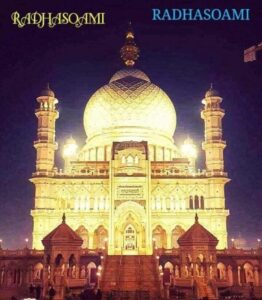In the month of maagh, January/February, the auspicious day of Panchmi (the fifth day of the
lunar fortnight in the Hindu Calendar), which is popularly known as Basant Panchmi. The
festival of Basant Panchami heralds transition from shivering winters to the Spring – the
season of blossoming buds and new beginnings in the mother nature and in human lives.
There are interesting legends, deep spiritual quotient and roots of historicity linked with
Basant Panchami.

First legend is Basant Panchami is the birthday of Goddess Sarswati. One of the trinity lords,
Brahma felt that ‘shrishti’ (creation of world) was too silent. So He created Goddess Sarswati
to spread art and music in the world – symbolized by Veena, the enrapturing string musical
instrument in the lap of deity Sarswati. On the day of Basant, Goddess Sarswati is
worshipped and invoked to seek blessings and boon of knowledge, art and music.
Second legend is more convolutedly intriguing. Asura (demon), Tarakasura had obtained a
boon after harsh penance that he could be killed only by the son of Lord Shiva. But, Shiva
had absorbed Himself in deep meditation for a long time after His first wife Sati had self-
immolated in the fire of ‘yajna’ conducted by her father Prajapati who had insulted Shiva in
the Yajna. As Shiva was immersed in meditation, unrestrained Tarakasura went amuck in his
atrocities. Legend goes that Sati is reincarnated as Parvati and undergoes severe penance to
attain Lord Shiva. But, Shiva remains absorbed in meditation. Then, Parvati takes help of
Kamadeva to awaken Shiva from deep meditation. Shiva awakes from meditation but reduces
Kamadeva to ashes. But, Shiva accepts Parvati as his spouse. This was the day of Basant
Panchami. Lord Kartikeya is born out of their union and kills Tarakasura.
Saints too have compared the time for the manifestation of the Supreme Lord of All Creation
on this earth with the most majestic of all seasons—Basant. Spiritually Basant indicates
beginning of new divine life, that is why, in Sri Guru Granth Sahab special holy hymns are composed in Raag Basant, and figuratively Basant heralds the end of -birth-death cycle and
commencement of new spiritual life. “Among the months, blessed is the month when spring
always comes” , said Guru Nanak in Guru Granth Sahab (Page- 1168). “When the mind
experiences spring, all people are rejuvenated. Blooming forth and flowering through the
Lord's Name, peace is obtained”, said Guru Amar Das in Guru Granth Sahab (Page- 1176).
The day of Basant Panchami is of great joy and enthusiasm for the devotees of Radhasoami
Faith also. It was on the day of Basant on 15 February, 1861 that the founder of Radhasoami
Faith, Param Purush Soami ji Maharaj (Shiva Dayal Singh) opened the Holy Name of ‘ra-
dha-swa-aa-mi’ to the entire world from his residence in Panni Gali, Agra, Uttar Pradesh.
Today Radhasoami Faith has spread all-over the world delivering the message of peace, love,
brotherhood of mankind and Fatherhood of the Supreme God. This year is the 205th
anniversary of Radhasoami Faith.
घट मेंखेलूँअब बसन्त । भेद बताया सतगुरु संत ।।
“I revel in the joy and Bliss of Basant internally within the depths of my soul, Most Gracious,
Ever Merciful, All benevolent, Sant Satguru has revealed the secret.”
Another historically important fact is that on the day of Basant Panchami on January 20,
1915, the 5 th Leader (Spiritual Master) of Radhasoami Faith, Shri Anand Sarup (honorifically
called Sahabji Maharaj) laid the foundation of Dayalbagh by planting a mulberry tree and set
up the headquarters of Radhasoami Satsang at Dayalbagh, Agra city. At Dayalbagh,
Education and Culture or a Way of Life commenced in the form of a very beautiful and
delicate plant, on January 1, 1916, with a Model School popularly known as Radhasoami
Educational Institute (REI). This plant slowly and gradually grew into the vast tree that it is at
present, in the form of a University, the impact of which can be felt not only on different
parts of the country, but also on countries abroad. The fragrance of this tree named
Dayalbagh Educational Institute, is spreading in all four directions.
आज आई बहार बसन्त । उमंग मन गुरु चरनन ललपटाय ।।
“Today, the beauty, glory, joyous splendor of Basant is here, With their minds filled with
exuberance and Bliss, the disciple devotees embrace in adoration the Holy Lotus Feet of Ever
Merciful Sant Satguru.” Given the spiritual and historical importance, Basant Panchami is being celebrated with great
fervor, love and devotion in the Eastern India region including Kolkata which has altogether
a number if Satsang Branches spread in different corners of Kolkata. Thousands of men,
women, children, youngsters and senior satsangis participate in various devotional and social-
service activities. Since, this time Basant festival coincides with the Republic Day of India,
the national flag will also be hoisted in all the nine branches of Satsang with full national
spirit and love for the motherland. Children and elders participate in sports, dance, drama to
celebrate the occasion and keep physical health fit.
On the occasion of Basant, various events like baby shows, fancy dress shows, gymnastics
and various sports events are organized in Dayalbagh Agra and in the branches of Easter
region and all other branches the world over. Children, youth and all siblings enthusiastically
participate in all these programs.

On the auspicious occasion of spring, grand and attractive electric decorations are done at
night in all satsang colonies and Satsang Branches of the country and abroad, for which
environmentally unfriendly candles or lamps etc. are not used so that any kind of pollution
may be avoided, rather use of electric and conserved solar energy is utilized for decorative
lighting.



